

new 11/15/2003
Secondary Air Injection (AIR) Systems
Overview
The Secondary Air Injection (AIR) system controls emissions during the first 20 to 120 seconds of engine operation by forcing air downstream into the exhaust manifolds to oxidize the Hydrocarbons and Carbon Monoxide created by running rich at start up.
Electric Secondary Air Injection System
The Electric Secondary Air Injection (AIR) system consists of an Electric Air Pump (EAP), single or dual combination Check Air Injection Diverter (AIR Diverter) Valve(s), an AIR Bypass solenoid, a Solid State Relay, Powertrain Control Module (PCM) and connecting wires and vacuum hoses (Figure 172).
The PCM requires ECT, IAT and rpm inputs to initiate Secondary Air Injection function.
When the engine is started, the strategy will determine when to enable the EAP. The PCM signals the Solid State Relay and the AIR Bypass solenoid, after a 10 second delay, to begin system operation. Once the catalyst is lit-off, the PCM then signals the Solid State Relay to stop Air Pump operation and the AIR Bypass solenoid to stop the vacuum supply to the AIR Diverter valve(s).
The Solid State Relay provides the start-up signal and will switch this high current required to operate the Air Pump.
The AIR Bypass solenoid applies a vacuum to the AIR Diverter valve(s) causing it to open and to allow air to flow into the exhaust manifolds.
The function of the Splash Cap is to provide the Air Pump with a source of dry air, if equipped.
The Electric Air Pump delivers the required amount of air which controls emissions during engine operation. Air is forced into the exhaust manifolds to oxidize the Hydrocarbons and Carbon Monoxide created by running rich at start up.
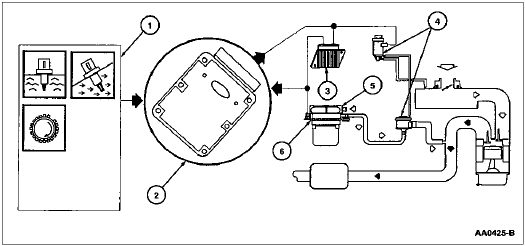
Figure 174: Dual or Single AIRD Valve Electric Secondary Air Injection (AIR) (Refer to the On-Board Diagnostics II System Overview for icon definitions.)
Hardware
Electric Air Pump
The Electric Air Pump (EAP) (Figure 175) provides pressurized air to the Secondary Air Injection system. The EAP functions independently of rpm and is controlled by the PCM. The EAP is only used for short periods of time. Delivery of air is dependent on the amount of system backpressure and system voltage. The inlet system of the pump incorporates a non-serviceable filter and Splash Cap which helps to guard against dirt and water.
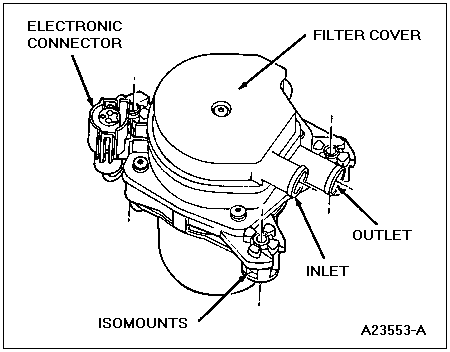
Figure 175: Electric Air Pump
AIR Bypass Solenoid
The Secondary Air Injection Bypass (AIR Bypass) solenoid (Figure 176) is used by the PCM to control vacuum to the Secondary Air Injection Diverter (AIR Diverter) valve. The AIR Bypass solenoid is a normally closed solenoid. The AIR Bypass solenoid also has a filtered vent feature to permit vacuum release.
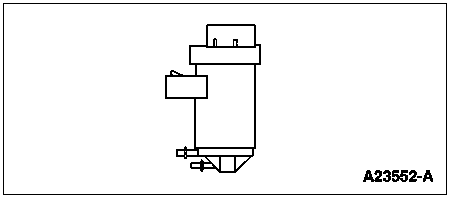
Figure 176: Secondary Air Injection Bypass Solenoid
AIR Diverter Valve
The Secondary Air Injection Diverter (AIR Diverter) valve (Figure 177) is used with the Electric Air Pump (EAP) to provide on/off control of air to the exhaust manifold and catalytic converter. When the EAP is on and vacuum is supplied to the AIR Diverter valve, air passes the integral check valve disk. When the EAP is off, and vacuum is removed from the AIR Diverter valve, the integral check valve disk is held on the seat and stops air from being drawn into the exhaust system preventing the back flow of the exhaust into the Secondary Air Injection System.
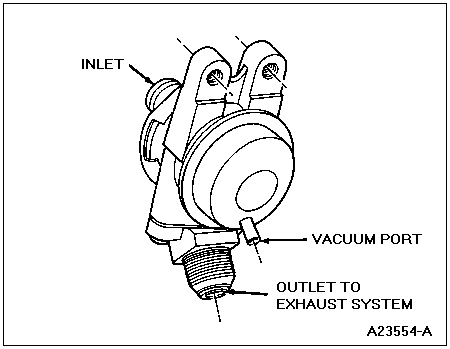
Figure 177: Air Injection Diverter (AIR Diverter) Valve
Solid State Relay
The Solid State relay (Figure 178) switches the high current required for operation of the Electric Air Pump (EAP). Input control to the Solid State relay comes from the Powertrain Control Module (PCM).
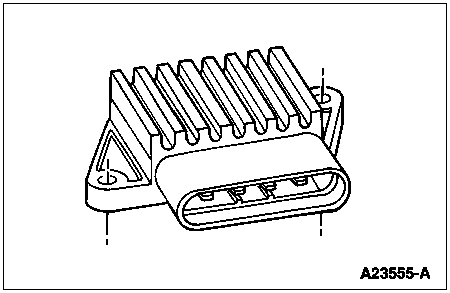
Figure 178: Solid State Relay
Paul Nimz
'97 TR
'93 EG mtx
Mine does not run all the time, it runs at hot idle
Example I come home from hockey every Friday night stop in front of the garage door
take my goalie pads and stick out and hang them in the garage put my bag in side the front door.
Pull car in garage and when I shut off you can here it winding down.
The air injection process is for the unburnt hydrocarbons leave the combustion chambers
It does not run on could engine as the car is in open loop and emissions high then. The O2 sensors have heaters to get them warmer faster to get the care into closed loop.
Belt driven air injection systems need somewhere to put the air the car does not use and have Devertor and by-pass valves in them. the early 2 way cats had a tube going either right in front of them or right into the body.
I am sure the older list members who had earlier fords remember the mess of large hoses with vacuum operated TAB/TAD valves in them {Thermactor AIR By-Pass/Thermactor Air Devertor}
From what I have seen of our set up the only place the air injection tubes go is right dead centre of the exhaust manifolds, The hi temp there and the fresh air injection will complete/continue the burn of any hydrocarbons not used up in the normal process inside the combustion chamber..
Where this pump is located would be a PITA if it ever come on and you happened to be in a puddle due to rainfall.
90% of cars on the road there emissions systems are set up to operate effectively at warm cruise, EGR, PCV, SAI. that is when the car can handle the dilution of intake mixture by EGR, PCV gases and the exhaust stream is not leaving the engine hell bent for leather. Idle creates a series of issues due to the time it takes a proper combustion to happen.
OH and I checked my lifter lab. the figure 8 pattern on the bottom of a normal lifter means it is rotating properly. {got an A on the lab} also non roller rockers are curved on the bottom to aid this rotation. 2 new ones placed end to end should rock..
Clare
If you think it is running all the time it would not be hard to determine this. Lift the front end and under the battery at the plastic apron you will see a short hose bent at 90 degrees and pointing down with one end open. This is the intake hose for the SAI pump. When running it will be pulling in air. I can almost guarantee you that it is not running and not the source of the noise.
Paul Nimz
'97 TR
'93 EG mtx
From: allenby
To: V8 Mail List
Subject: Re: Whining noise from under the hood
Mine must be furbar with out throwing a code
cus I here it sometimes when I shut the car off.
That muted whine
sounds like a J-79 from about 3/4 of a mile away {you guys can figure that one out}
Clare
SAI should only be in operation for up to the first two minutes after the engine is started. It is used to pump extra O2 into the exhaust stream to heat up the cats.
I had the whine and it was the tranny.
Paul Nimz
'97 TR
'93 EG mtx
SAI pump
Kirk J Doucette
I sounds like it is coming from the left side. (sitting in the driver seat)
Thanks.
Roman Steichen
Founder/President CapitalSHO club
99 Black
Welded
Borlas